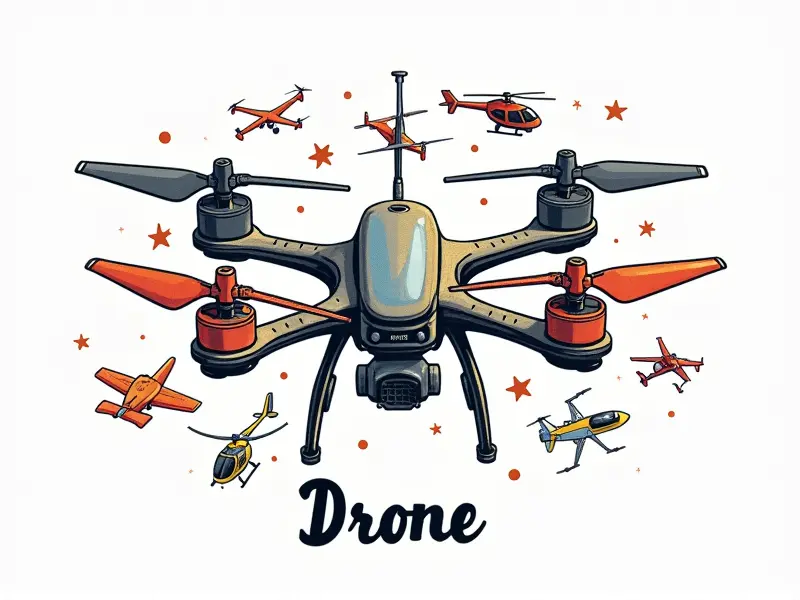Do drones require GPS to fly?

Can Drones Fly Without GPS?
Drones can indeed fly without GPS, but the level of autonomy and precision they offer is significantly reduced. The absence of GPS means drones rely on alternative navigation methods such as visual positioning systems (VPS) or manual control via a remote.
Do You Need GPS for Drone Flight?
The necessity of GPS for drone flight depends largely on the intended use and capabilities of the drone. For basic recreational flying, GPS is not strictly required, but it enhances safety and stability. However, advanced applications like surveying or precision agriculture necessitate GPS.
Flying Drones: Is GPS Essential?
While GPS is highly beneficial for drones, it's not always essential. Basic drone models often operate effectively without GPS by relying on other technologies such as visual sensors and inertial measurement units (IMUs). However, GPS provides critical features like precise location tracking and automated flight paths.
The Role of GPS in Drone Operations
GPS plays a pivotal role in drone operations by providing accurate positioning data. It enables drones to maintain stability during flights, follow predefined routes with precision, and avoid obstacles. Additionally, GPS is crucial for regulatory compliance, especially when flying over sensitive areas.
Benefits of GPS in Drone Operations
- Precision: GPS ensures that drones can fly along exact paths, making them ideal for tasks like mapping and surveying.
- Safety: By knowing the drone's location at all times, operators can prevent accidents or unauthorized flights.
- Autonomy: Drones equipped with GPS can perform complex maneuvers autonomously, reducing the need for constant manual control.
Do FPV Racing Drones Need GPS?
First-person view (FPV) racing drones typically do not require GPS. These high-speed drones rely on real-time video feeds and manual piloting skills to navigate through courses. The fast-paced nature of FPV racing makes it impractical for the drone to depend on external positioning systems like GPS.
GPS-Free Drone Operations Possible?
Absolutely, many drones operate successfully without GPS. For instance, indoor drones and those used in confined spaces often rely solely on visual sensors and IMUs. These technologies allow drones to navigate within smaller environments with high accuracy.
Quadcopter Flight Without GPS
- Visual Positioning System (VPS): Many quadcopters use VPS, which relies on downward-facing cameras and sensors to maintain stability indoors or in GPS-denied areas.
- Inertial Measurement Unit (IMU): An IMU provides data about the drone's orientation, velocity, and acceleration, enabling it to fly stably without GPS.
Helicopter Drones & GPS Dependency
Helicopter drones can also operate without GPS, but they often face challenges in maintaining stability and navigation accuracy. Helicopters typically use more sophisticated sensor systems like LIDAR or sonar to compensate for the lack of GPS.
Navigating with Just a Remote
Flying a drone purely by remote control can be challenging but is possible, especially in controlled environments where GPS signals are weak or absent. Pilots need excellent hand-eye coordination and situational awareness to navigate effectively without GPS.
Manual Control Techniques
- Situational Awareness: Constantly monitoring the drone's position relative to its surroundings is crucial for manual control.
- Practice: Regular practice helps improve skills in navigating drones without GPS.
Drone Navigation: Beyond GPS?
The future of drone navigation may lie beyond traditional GPS. Emerging technologies like 5G, artificial intelligence (AI), and satellite-based positioning systems offer new possibilities for drone operations. These advancements could provide even more accurate and reliable positioning data, enhancing the capabilities of drones in various applications.
Future Prospects
- 5G Integration: 5G networks promise low latency and high bandwidth, enabling real-time control and enhanced navigation for drones.
- Satellite Positioning Systems (SPS): New satellite systems like Galileo or BeiDou offer additional layers of redundancy and accuracy in positioning data.
Conclusion
In summary, while GPS is highly beneficial for drone operations due to its precision and safety features, it is not always essential. Drones can fly without GPS using alternative technologies such as visual positioning systems (VPS) or inertial measurement units (IMUs). However, the absence of GPS limits certain advanced functionalities and may require more skillful manual control from operators.

